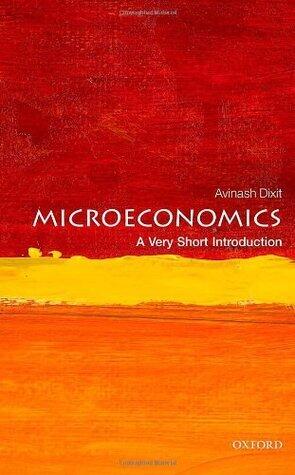
Microeconomics: A Very Short Introduction
Inga betyg ännu
History
Business & Economics
Format
Pocketbok
Sidor
160
Språk
Engelska
Publicerad
May 1, 2014
Förlag
Oxford University Press
ISBN-10
0199689377
ISBN-13
9780199689378
Beskrivning
Avinash K. Dixit delves into the fascinating world of microeconomics, inviting readers to explore the choices individuals make that shape their daily lives. The narrative unfolds the fundamental concepts of scarcity and decision-making, shedding light on how these elements influence everything from employment to shopping habits. It presents a clear framework for understanding economic behaviors that many might overlook in their routine decisions.
Dixit guides the reader through the intricate relationships between supply, demand, and pricing, demonstrating how these factors create a balance in the marketplace. He emphasizes the importance of incentives and trade-offs, helping the reader gain a deeper appreciation for the complexities of economic interactions. The discussion also tackles broader implications, such as the effects of policies on individual choices, making it relevant for understanding contemporary economic issues.
With engaging examples and accessible language, this exploration makes microeconomic principles relatable and applicable to everyday situations. It invites readers to reflect on their financial decisions and the underlying motivations that drive them, encouraging a more informed approach to personal and economic challenges.
Dixit’s concise yet insightful analysis serves as a valuable resource for anyone looking to grasp the essentials of microeconomics without getting lost in jargon. This compelling examination offers a fresh perspective on how individual choices not only reflect personal values but also shape societal outcomes.
Dixit guides the reader through the intricate relationships between supply, demand, and pricing, demonstrating how these factors create a balance in the marketplace. He emphasizes the importance of incentives and trade-offs, helping the reader gain a deeper appreciation for the complexities of economic interactions. The discussion also tackles broader implications, such as the effects of policies on individual choices, making it relevant for understanding contemporary economic issues.
With engaging examples and accessible language, this exploration makes microeconomic principles relatable and applicable to everyday situations. It invites readers to reflect on their financial decisions and the underlying motivations that drive them, encouraging a more informed approach to personal and economic challenges.
Dixit’s concise yet insightful analysis serves as a valuable resource for anyone looking to grasp the essentials of microeconomics without getting lost in jargon. This compelling examination offers a fresh perspective on how individual choices not only reflect personal values but also shape societal outcomes.
Recensioner
Inga recensioner ännu
Bli den första att recensera denna bok och dela dina tankar
Lägg till första recensionenLäsdagbok
Inga läsloggar hittades
Börja spåra dina läsframsteg för att se loggar här
Lägg till din första läsloggAnteckningar
Inga anteckningar hittades
Börja skriva anteckningar för att se dem här
Lägg till din första anteckningTransaktionslogg
Inga transaktionsloggar hittades
Börja spåra dina boktransaktioner för att se loggar här
Lägg till din första transaktionslogg


















